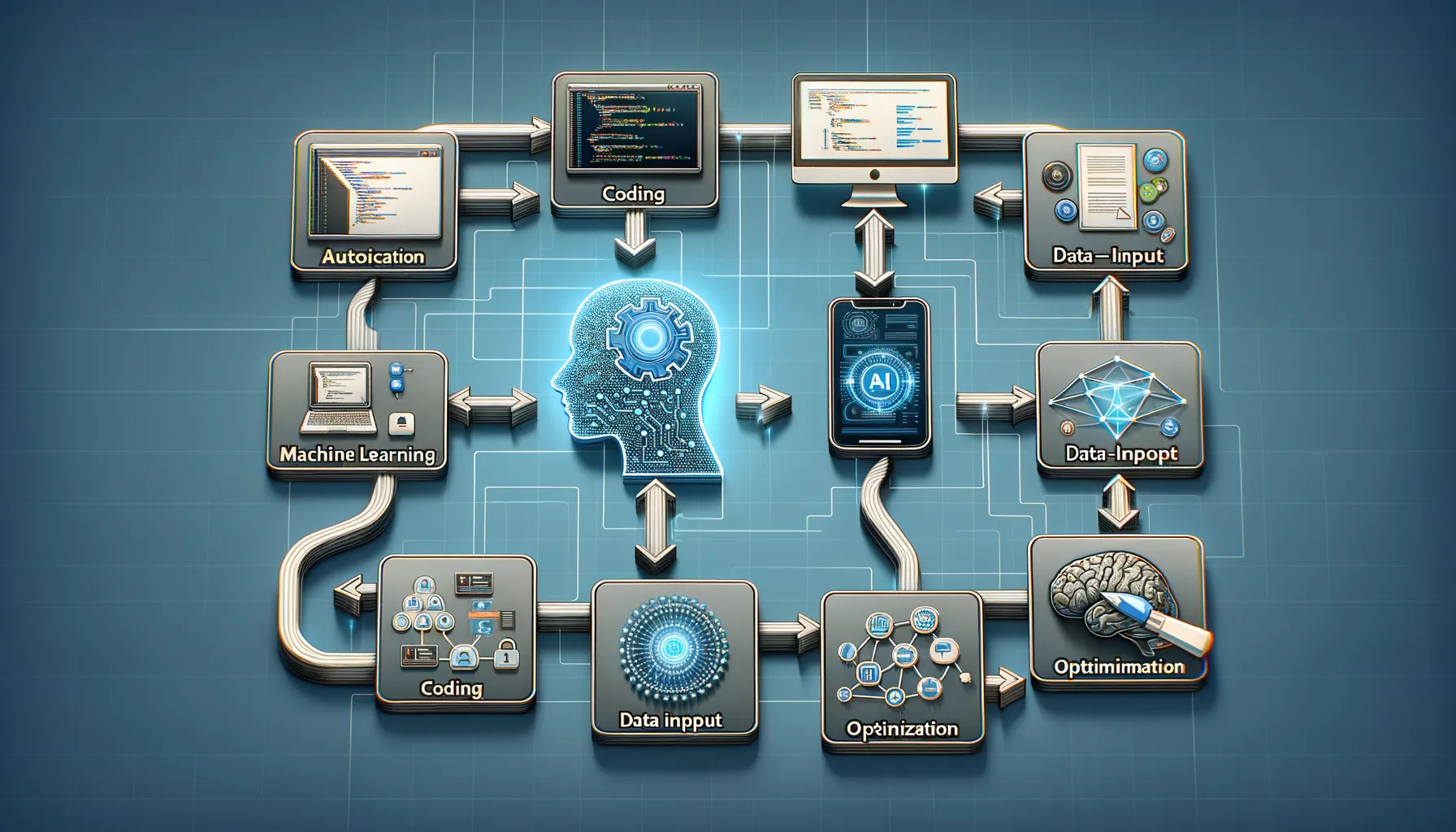Understanding the Benefits of Automating Routine Tasks with AI
Why Automation Feels Like Gaining Extra Hours in Your Day
Imagine shaving hours off your daily to-do list without lifting a finger. That’s the gift of automating routine tasks with AI. It’s not just tech wizardry; it’s a lifeline for anyone drowning in repetitive work. Think about all those mundane yet necessary clicks, taps, and data entries you do every day. Now picture handing those over to an eager assistant who never sleeps, complains, or makes mistakes. Blissful, isn’t it?
But it’s not just about convenience. Automation with AI unlocks time, energy, and focus to tackle what really matters—your creative projects, strategy building, or simply having the headspace to think big. Take scheduling emails, for example. What might take you 15 minutes can be handled in seconds by AI-powered tools. These small wins add up fast.
- Productivity soars: You’ll finally cross off that last checkbox on your task manager.
- Accuracy improves: Say goodbye to human errors in repetitive workflows.
- Peace of mind reigns: Let the algorithms sweat the small stuff while you shine where it counts.
Automation Helps Your Workflow Flow
Automation isn’t just practical—it’s liberating. An AI algorithm analyzing thousands of lines of data while you sip your coffee? That’s modern-day magic. You’re essentially creating a symphony where every instrument (or process) plays without you lifting the baton.
Consider this: You’re a small business owner juggling social media posts, inventory management, and customer support. By automating basic tasks like updating spreadsheets or responding to FAQs with chatbots, you gain time to dream up your next big idea. Automation doesn’t replace you—it amplifies you.
Key Areas Where AI Can Automate App Processes

AI’s Power in Streamlining App Workflows
When it comes to apps, AI isn’t just a fancy add-on—it’s the ultimate backstage hero, orchestrating all those tedious tasks we’d rather ignore. Imagine your app running smoother than a well-practiced symphony, with AI effortlessly managing behind-the-scenes chaos. That’s the magic we’re diving into here.
Some of the most transformative areas where AI automates processes include:
- Data entry and management: Bid farewell to mind-numbing manual data input! AI tools can extract, classify, and organize information with machine-precision—think smart assistants that decode receipts or auto-tag photos.
- User behavior insights: Ever wonder how apps like Netflix seem to predict exactly what you want? AI dives deep into customer habits, turning raw data into hyper-personalized experiences.
- Customer support: Those quick chatbot replies? Pure AI genius. They resolve repetitive questions and escalate complex issues to human agents, saving hours of frustration.
Pushing the Boundaries with Predictive Analytics
Take it up a notch with predictive analytics. This is where AI flexes its futuristic muscles. An e-commerce app, for example, can use purchase history to predict what users might buy next. Or a fitness app might nudge you with reminders because it “knows” you’re slacking off on workouts. It’s like having an intuitive friend who just *gets* you—except it’s a highly efficient algorithm.
Embrace this technology, and your app won’t just function; it’ll thrive.
Step-by-Step Guide to Integrating AI Automation into Applications

Breaking Down the AI Integration Journey
Integrating AI automation into an app might feel like launching a spacecraft—complex, thrilling, but achievable with the right steps. Imagine walking through it as if you’re assembling a puzzle; each piece clicks into place to create something extraordinary. Here’s how to make it happen:
- Define your mission: First, pinpoint the exact tasks you want to automate. Is it sorting emails? Analyzing user behavior? Be as specific as a detective solving a mystery.
- Pick the brainpower: Choose AI tools that align with your needs. Whether it’s chatbots like ChatGPT or machine learning frameworks, research until you find the perfect match for your app’s personality.
- Get your data in shape: AI thrives on quality data. Organize and clean up your input like you’re setting a dinner table before serving the main course!
- Test like a pro: Build small prototypes. Watch how the AI breathes life into your application, like testing paint colors before doing the whole wall.
- Plug it in and scale: Seamlessly integrate the AI tool into your app. Then, expand its scope as you witness results. Think of this phase as adding extra rocket boosters.
Pro Tips to Avoid Tearing Your Hair Out
Integration isn’t just about tech—it’s about mindset too. Here’s what you shouldn’t overlook:
- Work with developers who “speak AI” fluently: Their expertise can sidestep coding bottlenecks.
- Prioritize user experience: Your automation should feel invisible, like magic working behind the curtain—not a frustrating maze your users have to navigate.
- Stay flexible: AI evolves at warp speed. Be ready to pivot and adapt, keeping your app ahead of the game.
Best Practices for Implementing AI Automation Successfully

Lay the Foundation with Solid Goals
Before embarking on your AI automation journey, it’s crucial to have a crystal-clear purpose. Think of it like planning a trip—you wouldn’t pack your bags without knowing the destination, right? Define what you want to achieve: reduced manual workload, faster processes, or perhaps fewer mistakes in repetitive tasks. Clear goals will help you avoid wandering aimlessly through endless AI possibilities.
Pro-tip: Start small! Don’t bite off more than you can chew. Begin with one task—maybe automating notifications for overdue invoices—and let success snowball from there.
Cultivate a Seamless Team and Tech Partnership
AI isn’t a magic wand; it thrives when paired with human intuition and proper tools. Get your team on board by explaining the “why” behind automation. People fear robots taking over—but when they see AI tackling tedious tasks, leaving them room for creative work, trust builds fast.
To ensure smooth implementation:
- Choose AI tools that fit your current systems, like puzzle pieces clicking into place.
- Test in real-world conditions before full rollout—it’s better to stumble during practice than during the main event.
- Monitor the results! Let data guide refinements, not assumptions.
Remember, AI works best when humans and machines become a dynamic duo, not competitors vying for control.
Future Trends in AI Task Automation and Its Potential Impact

The Waves of Change: Smarter Automation on the Horizon
The future of AI task automation feels closer than ever, doesn’t it? Imagine apps that not only handle repetitive work but also **predict what you need** before you even think about it. That’s where we’re heading. AI is evolving from an obedient worker to a proactive partner. Think about email sorting today—folders for promotions, social updates, and priority messages. Now, picture this: an app that reads the tone of your emails, flags urgent tasks, and schedules follow-ups with zero input from you. Wild, right?
But let’s dig a bit deeper. What are we really looking at in terms of upcoming capabilities?
- Hyper-Personalized Solutions: Apps will adapt to individual behaviors, creating seamless, custom workflows tailored just for you.
- Real-Time Decision Making: AI won’t wait for instructions; it’ll analyze data on the fly and make informed choices—faster than any human could.
Here’s the kicker: this isn’t just about speed or efficiency. It’s about unleashing creativity. When your app handles the tedious bits, all that mental space gets freed up for ideas, strategy, and growth. If AI’s current phase feels revolutionary, brace yourself. What’s next may completely redefine “routine.”
